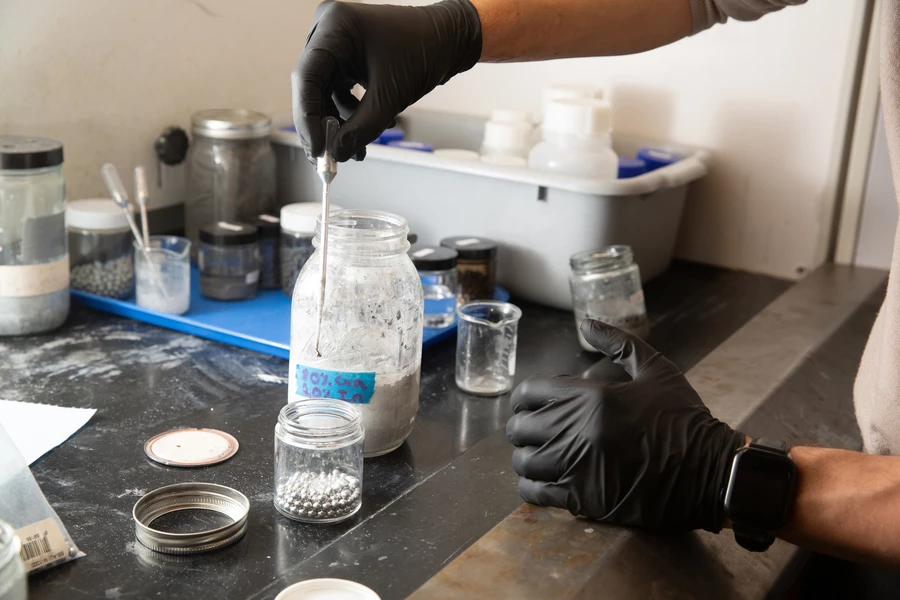MIT scientists have discovered an intriguing new way to produce hydrogen fuel, using just soda cans, seawater and coffee grounds. The team says the chemical reaction could be put to work powering engines or fuel cells in marine vehicles that suck in seawater.
Hydrogen is an important player in the game for decarbonizing energy production – it’s clean-burning, energy-dense, and when used in fuel cells the only by-product is water. But one major hurdle is that it’s hard to store and transport, because the tiny molecules tend to leak right through containers and piping. Not only does that mean losses, but excess hydrogen can wreak havoc in the atmosphere.
But future systems based on MIT’s new technique could effectively produce hydrogen on demand right there in a vehicle. The only thing that would need to be carted around and stored would be aluminum pellets, which are far more stable and easier to work with.
In tests, a single pellet of aluminum weighing just 0.3 g (0.01 oz) placed in fresh, de-ionized water produced 400 ml of hydrogen in just five minutes. Scaled up, the team estimates that a single gram of pellets could generate an astonishing 1.3 L (0.3 gal) of hydrogen in five minutes.
The technique is based on a fairly simple chemical reaction: aluminum reacts very strongly to oxygen. So when you dunk it in water, it quickly strips the O out of H2O, leaving molecular hydrogen behind to bubble out. The problem is, this process usually doesn’t last long. As it occurs, a thin layer of aluminum oxide builds up on the metal’s surface, blocking the pure aluminum below from interacting with the oxygen any further.
Previous studies have found that mixing in other metals like gallium can take the brakes off, by breaking down the aluminum oxide layer as it forms. In this case, the team pretreated the aluminum pellets with an alloy of gallium and indium, which allowed the reaction to last longer.

One potential downside is that gallium and indium are rare and expensive. But the researchers found that performing the reaction in an ionic solution caused the alloy to clump together into a form that can be scooped out and reused. Conveniently, seawater is an ionic solution.
The next problem was that the reaction was much slower in seawater, taking about two hours to produce the amount of hydrogen it took five minutes to make in fresh water. Through experimentation, a surprising final ingredient came to the rescue. When the team threw in some old coffee grounds the reaction sped up significantly, back to just five minutes. On closer inspection, the key was identified as imidazole, a compound in the caffeine.
The researchers propose that their recipe forms the basis of a practical hydrogen reactor that could be especially useful for powering marine vehicles.
“This is very interesting for maritime applications like boats or underwater vehicles because you wouldn’t have to carry around seawater – it’s readily available,” said Aly Kombargi, lead author of the study. “We also don’t have to carry a tank of hydrogen. Instead, we would transport aluminum as the ‘fuel,’ and just add water to produce the hydrogen that we need.”
The first test of the idea will be a small underwater glider which, according to their calculations, could run for up to 30 days straight by pumping seawater from its surroundings through a reactor holding about 40 lb (18 kg) of aluminum pellets.
“We’re showing a new way to produce hydrogen fuel, without carrying hydrogen but carrying aluminum as the ‘fuel’,” said Kombargi. “The next part is to figure out how to use this for trucks, trains, and maybe airplanes. Perhaps, instead of having to carry water as well, we could extract water from the ambient humidity to produce hydrogen. That’s down the line.”
The research was published in the journal Cell Reports Physical Science. A demonstration of the reaction can be seen in the video below.
Source: MIT



